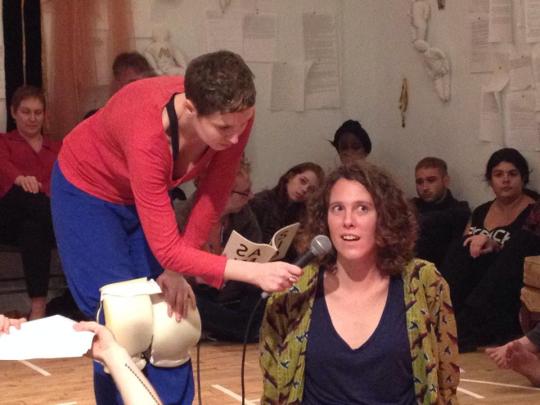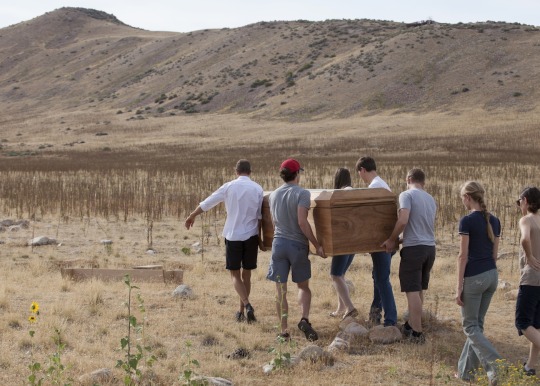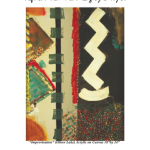Performing Artists: Submit Your BEST Application
Strategies for a strong performing arts application from NYFA’s Ana Fiore
NYFA Fiscal Sponsorship has an application deadline coming up on September 30th! Check out this June post from NYFA Current to learn more about our fiscal sponsorship program and how it can help your project.
With recent applications opening for foundations like The MAP Fund, The Field Leadership Fund, MidAtlantic, and borough arts councils, fiscal sponsorship staff are considering how to best advise our performing artists on putting together their strongest applications. Whether you’re applying to become a NYFA Fiscally Sponsored Artist, have your work presented, participate in a residency, or receive a grant, focusing on these things will help your application stand out and be seriously considered.

A Descriptive Project Narrative:
The project narrative is often the most time consuming and challenging portion of an application. Start by considering how you would describe your project to someone who has never seen your work before. In introducing your project, the backstory and inspiration are less important than the action. Ideally, the panel will be able to visualize the general scene, aesthetic, and point of view of your project before they even view your work sample. It can be useful to adopt the voice of a critic when drafting your project narrative. You are the best advocate for your project so using clear, concise, and descriptive language explain your project as it would appear in a positive review that encourages the reader to attend your next performance. Once you’ve “set the stage” you can address your larger goals for the project and your intended process for reaching them. This section should link the research and interests of your project to the mission of the organization. It is also a good time to briefly explain why performance is an important medium for your project. Why is your concept most successful and powerful in this form? Throughout the project narrative use an active voice and go for clarity over the theoretical.
An Inclusive Budget:
The budget is often the second most challenging portion of an application and the section where we are most often asked for advice. The basics of a budget are that it must include income and expenses, be balanced, and match any claims made in your fundraising strategy. Do not be afraid of over explaining or providing too much detail in your budget. The more you can line item different expenses and break out costs, the more well researched your application appears and the clearer your understanding and thoughtfulness about the more practical side of your project becomes. It is especially important for performing artists to remember to pay themselves on the expenses side and to include in-kind support on the income side. In addition to paying your collaborators and performers, you should include a fee for your work on the project. Whether you’re acting as the project director or lead artist, there should be an expense line for your services. You can start with a reasonable hourly wage to determine your fee. Organizations and foundations that support the arts, want to see artists paid for their work! If you expect to receive any sort of in-kind support, it should be listed on the income side of your budget and match a need on the expense side of your budget. In-kind support can be a wide array of goods including rehearsal space, costume or set materials, and technical/lighting supplies. In-kind contributions are yet another means of revenue and help to show you’re considering diverse funding for your project.
A Quality Work Sample:
The work sample often has the greatest impact on a panel and it is important to submit a sample that is of high quality, clearly displays your work, and follows the guidelines of the application. Carefully read the guidelines to understand what type of sample is accepted. Are mailed DVDs ok or do you need to submit a link? What platforms have been recommended? Is it ok for the video to be password protected or do you need to submit a public video? How many samples are you allowed and what is the recommended length? It is generally best to submit a full work with clear cues to the most dynamic section. There is always the possibility the panel will want to watch more of the work, in which case, you want to provide them with more than just a short excerpt. Under most circumstances, however, they will only spend 5-10 minutes with any work sample so provide cues to the section you’re proudest of or feel is most emblematic of your work and interests. Highlight reels or promo videos that are clip edited rarely make strong work samples. A well lit, one camera work sample without any edits is often your strongest option. Do not be concerned with submitting a flashy sample. Let your work speak for itself and provide the panel with the cleanest view of your work as possible. They will only be further impressed when they get to experience it live.

Upcoming NYFA opportunities for Performing Artists:
- Apply for Fiscal Sponsorship by September 30th!
- The Performing Arts Bootcamp application is now open! The deadline to apply is Monday, October 5th.
- Applications for Artists’ Fellowships in Choreography, Music/Sound, and Playwriting/Screenwriting will be opening this Fall.
– Ana Fiore, Program Associate, Fiscal Sponsorship
Raised by a painter and historic preservationist, Ana Fiore, has spent the majority of her life immersed in the art’s world. She attended Booker High School for the Visual and Performing Arts in Sarasota, FL and received her B.A. from Connecticut College. She has whole-heartedly participated in numerous and distinct art’s communities, working for the American Dance Festival, Movement Research, The Joyce Theater Foundation and the Center for Performance Research before joining the New York Foundation for the Arts’ Fiscal Sponsorship team. She is passionate about arts advocacy and dedicated to making connections between artists and the institutions that support them.
Images, from top: Go! Push Pops, XMarksDaSpot, photo by Luis Nieto Dickens, August 2014. Panoply Performance Laboratory, Any Size Mirror is a Dictator, 2014, Momenta Art, photo by Robert Zott3. Drum Casket by Amery Kessler, photo by Beau Pearson




